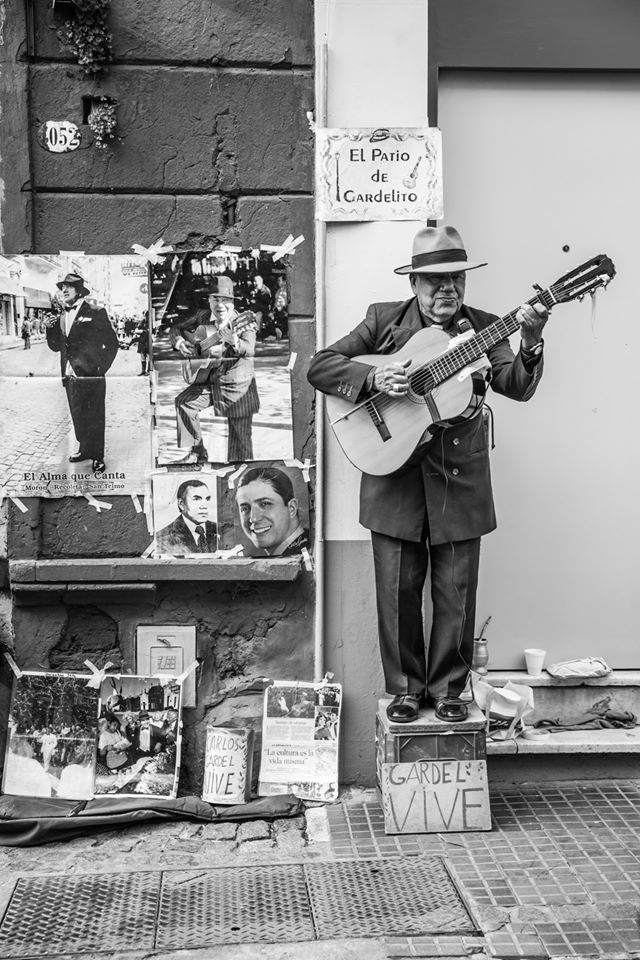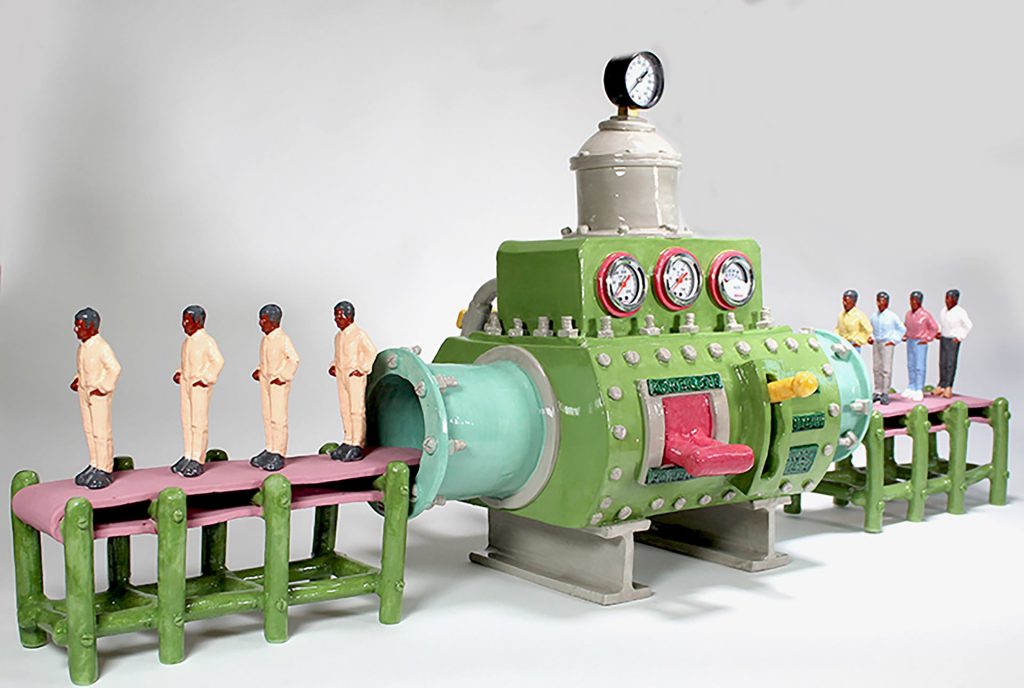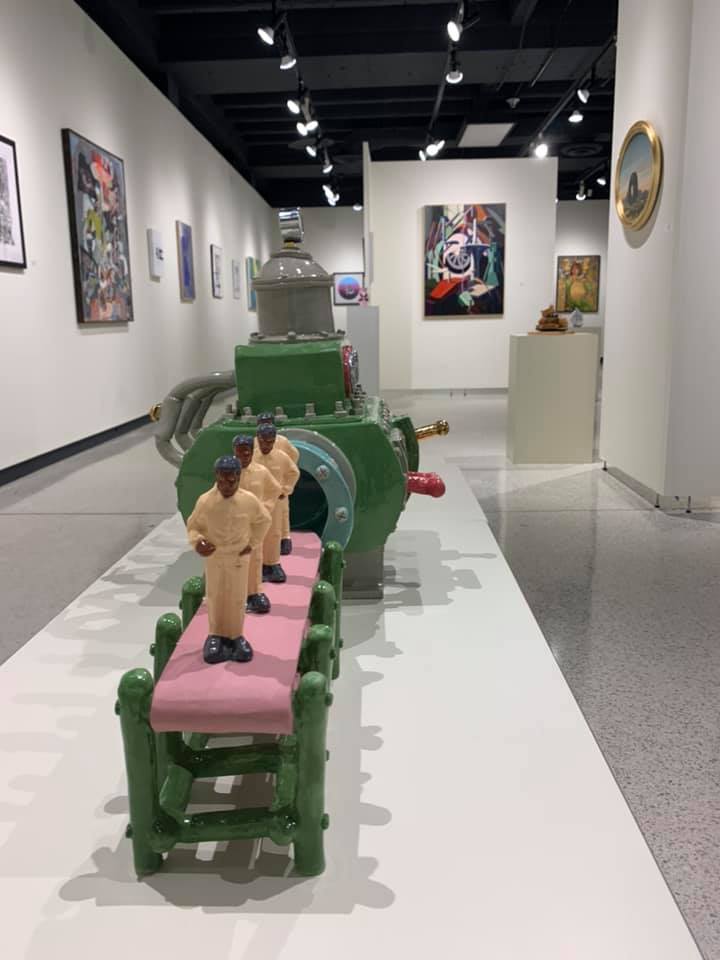Finding a Sense of Home Within the Valdosta National 2020 Exhibition
By: Harlee E. Webb

This year the 32nd annual “Valdosta National” All-Media Juried Exhibition was held at Valdosta State University in the Dedo Maranville Fine Arts Gallery. This specific exhibition contained a variety of artwork from all over the country showcasing contemporary visual art from 50 artists representing 25 states. From the ceramics studio down the hall, one could hear the chatter of numerous guests, waiting to enter the gallery. Students covered in paint came fleeing towards the gallery in swaths– so too did men and women in business attire– all of them piling in through the glass door. Having maneuvered my way through the throng, I found myself amongst the menagerie of artwork– some extremely pleasing, and others shocking to behold. This exhibition was diverse in media, style, and subject matter, so much so that it felt overwhelming. The richness of this exhibition served not only to showcase the talents of the artists from 25 states, but also to provoke discourse between those attending.
This year the 32nd annual “Valdosta National” All-Media Juried Exhibition was held at Valdosta State University in the Dedo Maranville Fine Arts Gallery. This specific exhibition contained a variety of artwork from all over the country showcasing contemporary visual art from 50 artists representing 25 states. From the ceramics studio down the hall, one could hear the chatter of numerous guests, waiting to enter the gallery. Students covered in paint came fleeing towards the gallery in swaths– so too did men and women in business attire– all of them piling in through the glass door. Having maneuvered my way through the throng, I found myself amongst the menagerie of artwork– some extremely pleasing, and others shocking to behold. This exhibition was diverse in media, style, and subject matter, so much so that it felt overwhelming. The richness of this exhibition served not only to showcase the talents of the artists from 25 states, but also to provoke discourse between those attending.
In the back of the room lays one of those works that inspires awe. Valerie Aranda’s Caminos/Paths (Peublito Mosconi) is a large square green canvas with several scenes of daily life such as people riding bikes, dogs, people walking in pairs and alone. The green paint, paired with the texture of different fabrics, allows the artwork to feel as if this scene takes place in a park. There is no depth of field; more aptly, the people are placed on a flat background. This piece resembles Seurat’s A Sunday on La Grande Jatte as they both have this sense of a community with a variety of people just living out their daily life. Looking into the bottom right corner, we see a peacock and, above that, a mother hen with her hatchlings. For me, between the scooters and the animals, I was back in Key West, where you would find roosters on every street corner and mopeds were more common than vehicles. This piece reveals to the audience the serenity of Latin-American culture–potentially in Arizona and the other southwestern states. The work doesn’t depict a cityscape, but instead shows us a bird’s eye view of a park, emphasizing the nostalgia of feeling at home. I wanted to love this piece, but I could not; I couldn’t allow myself. In the middle of the canvas, we see three rolled-up ribbons of a different color, almost to represent a flower or rose of some kind. However, it distracts the eye; all I could think about is how I wanted to rip it off of the canvas, so that it would quit competing with the other subject matter. I couldn’t wrap my head around the intentions of the ribbon, unless the intention was to make the viewer feel uncomfortable and distract from the rest of the piece.

Gardel Vive, Bueno Aires, Argentina by Gerald Alderman also represents culture, like a moment in history was being documented right in front of my eyes. I couldn’t decide if it was the clarity of the image, the arrangement of textures, or the variety in value that made this piece so aesthetically pleasing to view. This photograph portrays an elderly Argentinian man standing on a box with a guitar in hand. To the left we see posters taped to the wall of what looks to be him through the years and to the right we see a cup and other belongings. The simple composition pairs well with the intriguing subject matter and the crowd seemed to gather one by one to glimpse this piece. The title, in English means “Gardel lives” and we can infer that Gardel is the man in the image. It depicts what living in Bueno Aires looks like for this specific gentleman, wrapped in memories and culture.
Certain areas of the gallery garnered far more attention than others, and I even blew off one piece from a distance, thinking it was an up-close photograph of a kitten. I said to myself “wow, how generic” only to feel like a fool after taking a closer look. I had to do a double-take when the label to the right read “colored pencil and Neocolor II.” This piece, It wasn’t Me by Nathalie Beck, left me astonished by the technique–how pencil lines were softly blurred to create the texture of fur. The use of hard vs. soft edges was very much considered and helped bring this piece to life. Pieces like this one are enjoyable, because they deceive the audience. Too often, we, as consumers of art, prejudge a work before taking the time to observe it up close and take into consideration the subject matter or technique utilized by the artist.

The talk of the show was Ramayana Baba’s Conveyer of Justice. The subject matter was strong and it was clear that the artist had something to say. The title alone, Conveyer of Justice, conveys to us the artist’s opinions on justice through the lens of the black community. The work showcased a pastel-colored machine with levers and valves. On one side was a conveyor belt of African American men in different outfits, all lined up with their hands on their hips, looking as if they are going into the machine. On the other side men are lined up, coming out, but now they are all wearing the same khaki-colored jumpsuits with black boots– as if they are being made into robots or jail-house inmates. In the piece, we can infer that they are literally prisoners to a legal system that has failed them. This piece shares a similar theme with famous works such as Betye Saar’s Liberation of Aunt Jemima and Karen Walker’s Sugar Baby. The relation is that these pieces all speak to the social issues that the African American community faces. All of these pieces use history to explore themes of race in our society. One issue that was apparent is how the viewers had to look down upon the sculpture rather than being placed at eye level, revealing how the United State’s justice system/police industrial complex tends to ‘look down’ on, or unfairly target minority communities, specifically the African American community. However,the placement was fitting, given that the viewer was looking down upon this sculpture of African American men, just as some members of our society look down on those who do not look like themselves.

The “Valdosta National” was a wonderful exhibition with only a few minor setbacks. The gallery was a little crowded. Some of the works were very successful and had recurring themes of race, culture, and society. However, the arrangement of the work within the gallery felt chaotic and offered no structure to the way that people should move around the artworks. In some areas, the spacing was awkward; the works seemed to compete with one another, making it hard to enjoy each piece on its own. The tone of the gallery felt nice, and I only wish the gallery was larger to have more space to ponder and look at the work, to sit awhile and just enjoy being in the presence of the work.
Bio: Harlee is a senior in the art education program at Valdosta State. Upon graduation, She plans to pursue a teaching career in K-12 public education.